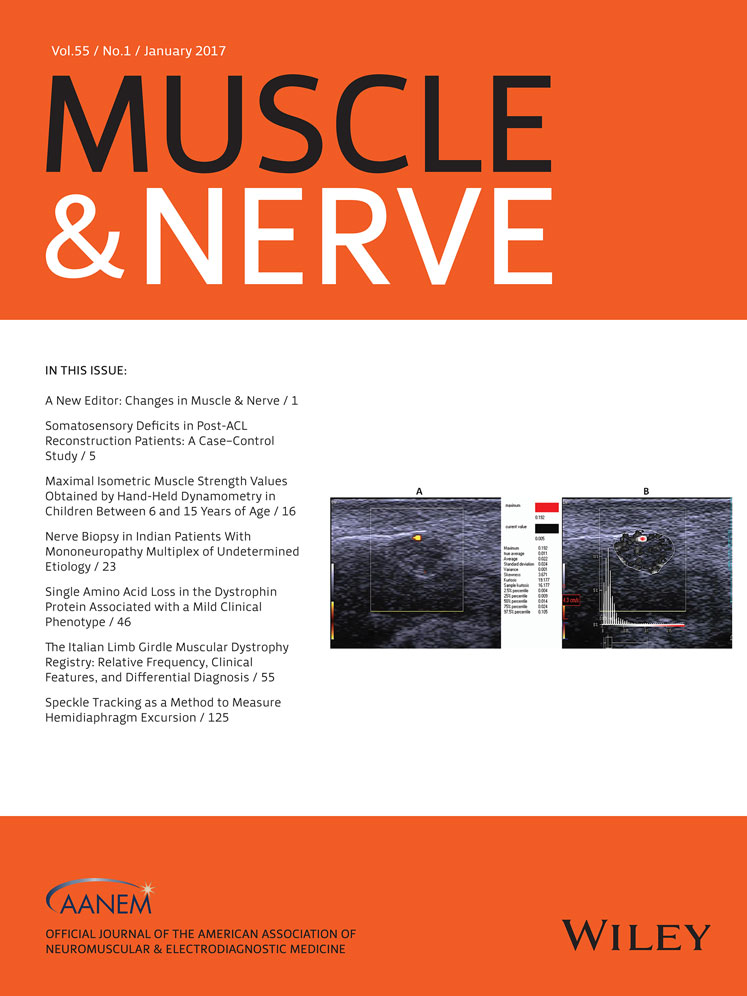Interrater reliability of electrodiagnosis in neonatal brachial plexopathy
ABSTRACT
Introduction: We investigated interrater reliability of overall assessment of nerve root lesions by electrodiagnostic testing (EDX) in neonatal brachial plexus palsy (NBPP). Methods: Two blinded, board-certified reviewers retrospectively reviewed de-identified EDX data from 37 infants with NBPP for 2005–2012. Only nerve conduction and electromyography needle data were included. The examiners independently assigned 1 of 4 nerve root lesion categories: (1) pre-ganglionic lesion (avulsion), (2) post-ganglionic lesion (rupture), (3) normal, or (4) “unable to determine.” Simple percentage agreement, the Cohen kappa statistic representing interrater reliability for each nerve root (C5–T1), and overall kappa between examiners were evaluated. Results: Interrater reliabilities were substantial to almost perfect for each nerve root except C5. Considering all nerve roots, overall interrater reliability was substantial (kappa = 0.62); simple percentage agreement was 75% (138/185). Conclusions: Interrater reliability of nerve root assessment by EDX for infants with NBPP was high for C6–T1 root levels, but less reliable for C5 because of technical factors. Muscle Nerve 55: 69–73, 2017




